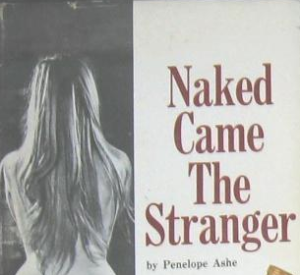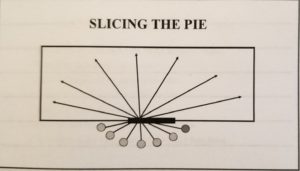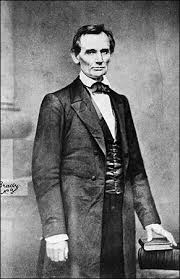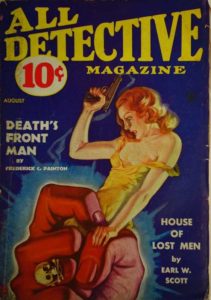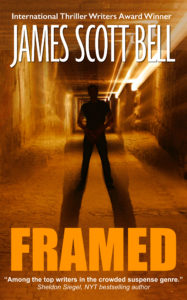
John William Waterhouse’s “Naiad.” (1893)
By PJ Parrish
I am way behind on my First Page duties, so I hope you all don’t mind taking a look at another, coming right behind yesterday’s submission by Clare. This is an odd one, in that I am not quite sure what to make of it. I know it’s a mere 400 words or so, but it’s hard to tell what kind of book we are dealing with here. Your comments, TKZers, are always welcome.
The Artist and the Model
Blake Everette loved painting seascapes. He enjoyed the rock outcroppings around Smugglers Cove. While descending the steep path down the cliff, he noticed two Sea-Otters playing on the rocks. He found a spot he liked near the south end of the beach, away from the path. Before he set up his easel, he grabbed his sketchpad to sketch the Otters. But, soon they left, swimming off. Blake set the sketch aside thinking: Perhaps, I’ll add the Otters to today’s painting.
Blake worked all morning, painting. At noon he stopped for lunch. He grabbed a sandwich and a beer from his backpack, sat on the dune, sandwich in one hand and a beer in the other. Soon, a movement on the rocky outcrop drew his attention. His first thought: The Otters are back. He reached for the sketchpad. Yet, on closer inspection, he realized: It’s not the Otters … it’s a person. From his distance, he couldn’t tell gender.
The figure walked along the rock stretching its arms and legs. Before long, it dove into the sea and swam outward, with powerful confident strokes. After a hundred yards, it turned back. The swimmer reached the shore, ten-yards from Blake. At that point, gender was not in doubts—it was a woman. Her swimsuit was a piece of red material, held in place by a red cord around her hips—other than that, she’s naked.
“Hi there,” she waved.
“High yourself,” Blake replied, “It’s a bit cold for swimming?”
“A little—but invigorating.”
“I paint here often, and you’re new.”
“I usually swim further up the coast. But I’ve had trouble there. I heard of this spot—deserted—thought I’d give it a try.”
“What sort of trouble?”
She cupped her breast in both hands, “Some people don’t appreciate nude swimmers on their beach.” She dropped her hands, looked straight at him, “Does it bother you—nudity?”
He slipped his sunglasses down and looked over the frames. “Not a bit.” He sat down, “I see nothing unpleasing to these eyes.”
“Ha, ha,” she laughed, dropping to her knees. “I like you,” she smiled. “You’re not like the other older people around here.”
“I don’t consider myself old. But, I’m fair and reasonable,” he said.
“It was a compliment. And as for age, I didn’t mean to imply…” she covered her mouth, blushing.
“No harm done—the truth is: I’m not as young as I once was.”
“In that context—neither am I,” she giggled.
“My name is Blake, by the way.”
She extended her hand, “Nice to meet you Blake—I’m Nancy … Nancy March.”
____________________________
Okay, we’re back and all goose-pimply from our nude dip in the sea. As I said, I haven’t the foggiest idea what genre we’re in here, so I will assume the story will reveal, eventually, a crime element given our bent here at TKZ. Or maybe it’s romance. So let’s consider our usual basic question about good openings: Has something been “disturbed?” Well, I guess seeing a naked woman emerge from the surf is disturbing, so yes, we might read on.
But there’s a strange lack of emotion on Blake’s part about all this. I write a series about a male protagonist, so I have to, well, try to think like a man. I’ve been living in Louis’s head for 15 years, so usually it’s not an issue. If you want to write fiction, you must be able to write credibly outside your own experience and gender. But once, I got stumped. I was writing a scene where Louis comes upon a woman sunbathing topless. I knew he had to react, but I couldn’t figure out exactly how. So I asked my husband, “what would you do?” He said, “I would look but pretend not to.”
I guess what I am looking for in this submission is some kind of reaction from Blake — and not just about a naked woman. We are TOLD that he loves to paint. We are TOLD that he enjoys this particular cove. He seems charmed by otters. Yet when a naked naiad appears before him, he has no thoughts, no emotions, no nothing. Even when the woman makes the oddly sexual motion of cupping her breasts.
Also, there’s a little bit of throat-clearing. Why begin at the morning with all the busy-business of him setting up, stopping for lunch, etc? Pick up the scene later, maybe when he pauses to take a drink of beer and then sees the woman? There are also some logic issues. What exactly is this woman wearing? I’m thinking it’s some kind of red bathing suit, bottoms only? But from a distance, he mistakes the “figure” as a brown otter?
We also have myriad typos and mistakes in here. Yes, we all make them, but we have to strive for a certain level of professionalism, even in a rough draft submission. Let’s take a closer look:
Blake Everette loved painting seascapes. You’re telling me; show me this through his thoughts and actions. He enjoyed the rock outcroppings around Smugglers Cove. While descending the steep path down the cliff, he noticed two Sea-Otters why capped?playing on the rocks. He found a spot he liked near the south end of the beach, away from the path. Before he set up his easel, he grabbed his sketchpad to sketch the Otters. But, soon they left, swimming swam off. Blake set the sketch aside thinking: Perhaps, I’ll add the Otters to today’s painting. Maybe I can add the otters in later to today’s painting, Blake thought. Don’t use “academic” punctuation like colons to convey thought.
Blake worked all morning, painting. At noon he stopped for lunch. I’d suggest starting here. He grabbed a sandwich and a beer from his backpack, sat on the dune, sandwich in one hand and a beer in the other. Don’t need to tell us that. Soon, a movement on the rocky outcrop drew his attention. His first thought: His first thought was that the otters were back and he reached for his sketchpad. But then he realized it was a person. The Otters are back. He reached for the sketchpad. Yet, on closer inspection, he realized: It’s not the Otters … it’s a person. From his distance, how far? he couldn’t tell gender.
The figure walked along the rock stretching its arms and legs then Before long, it dove into the sea and swam outward, with powerful confident strokes. After a hundred yards, it turned back. The swimmer reached the shore, ten-yards from Blake. A little confusing here. When he first noticed the figure, it was so far away he couldn’t tell it was a naked woman. She swam 100 yds out and came back, but somehow ended up 10 yds from Blake? I thought she began way down the beach?
At that point, Go right into a reaction here. gender was not in doubts—it was a woman. Her swimsuit was a piece of red material, held in place by a red cord around her hips—other than that, she’s naked. A tense lapse.
“Hi there,” she waved. “waved” is not an attribution verb. She waved and then said.
“High ???yourself,” Blake replied, “It’s a bit cold for swimming?” Seems a strange thing for a man to say to a naked lady. Unless you made it a visual point that maybe her skin is all goose-pimply? You don’t give us much visual to go on here at all. You missed a chance to SHOW us what the woman looks like via his thoughts. This whole scene is oddly bloodless. It might work to tell us before this how cold the day is.
“A little—but invigorating.”
“I paint here often, and you’re new.” Again, this seems an odd thing to say. I am dying to know what this man is THINKING! Go into his thoughts a little. What is he feeling? Shy? Embarrassed? Turned on? He’s not even curious! At the very least, you are missing a chance to slip in a little backstory ie: He had been painting at Smuggler’s Cove every morning since he had moved here two years ago. He knew everyone in the village, from the old woman at the post office who remembered he liked bird stamps to the skinny kid who never seemed to remember he liked his newspaper tossed on the porch. But this woman…he had never seen her before. WHERE ARE WE? Blue Hill, Maine? North Vancouver? There are always ways to gracefully slip this info in early on.
“I usually swim further up the coast. But I’ve had trouble there. This is the first indication of intrigue. I heard of this spot—deserted—thought I’d give it a try.”
“What sort of trouble?” Again, this begs for a quick thought. Maybe this is where you can tell us where we are? He can think that up the coast in Mendocino (or whatever), there had been trouble with kids on the beach…or something. Don’t miss small opportunities to insert details about setting.
She cupped her breast in both hands, I think you mean she cupped her breasts? Or do you mean she is trying to cover herself? Cupping is provocative. Folding her arms across her chest implies modesty. “Some people don’t appreciate nude swimmers on their beach.” She dropped her hands, looked straight at him, “Does it bother you—nudity?” A bunch of punctuation mistakes here and/or missing attribution.
He slipped his sunglasses down and looked over the frames. “Not a bit.” He sat down, “I see nothing unpleasing to these eyes.”
“Ha, ha,” she laughed, dropping to her knees. “I like you,” she smiled. “You’re not like the other older people around here.”
I’m only thirty-four, he thought. (slips in backstory!) But he guessed that the woman was maybe twenty, so perhaps she considered him old. We also get NO description of the woman other than she’s wearing a red bathing suit bottom. Perfect place to SHOW us what she looks like via Blake’s point of view. “I don’t consider myself old. But, I’m fair and reasonable,” he said. What does that mean, I’m fair and reasonable?
“It was a compliment. And as for age, I didn’t mean to imply…” she covered her mouth, blushing. This woman, given her provocative actions thus far, does not strike me as someone who blushes easily.
“No harm done—the truth is: Lose the colons! I’m not as young as I once was.”
“In that context—neither am I,” she giggled. What context?
“My name is Blake, by the way.”
She extended her hand, period. “Nice to meet you Blake—I’m Nancy … Nancy March.”
________________
As I said, we’re handicapped by our 400-word limit, so it’s hard to tell where we’re going or what kind of world we’re entering here. But my main suggestion, dear writer, is that you slow down and little and add some emotional meat to these bones. The situation is intriguing, but because you haven’t given much of a context in setting or in your main character’s thoughts and emotions, I feel…well, at sea.


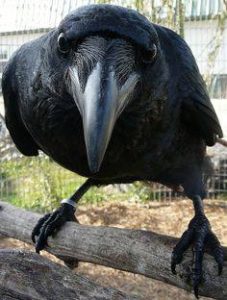 By
By 